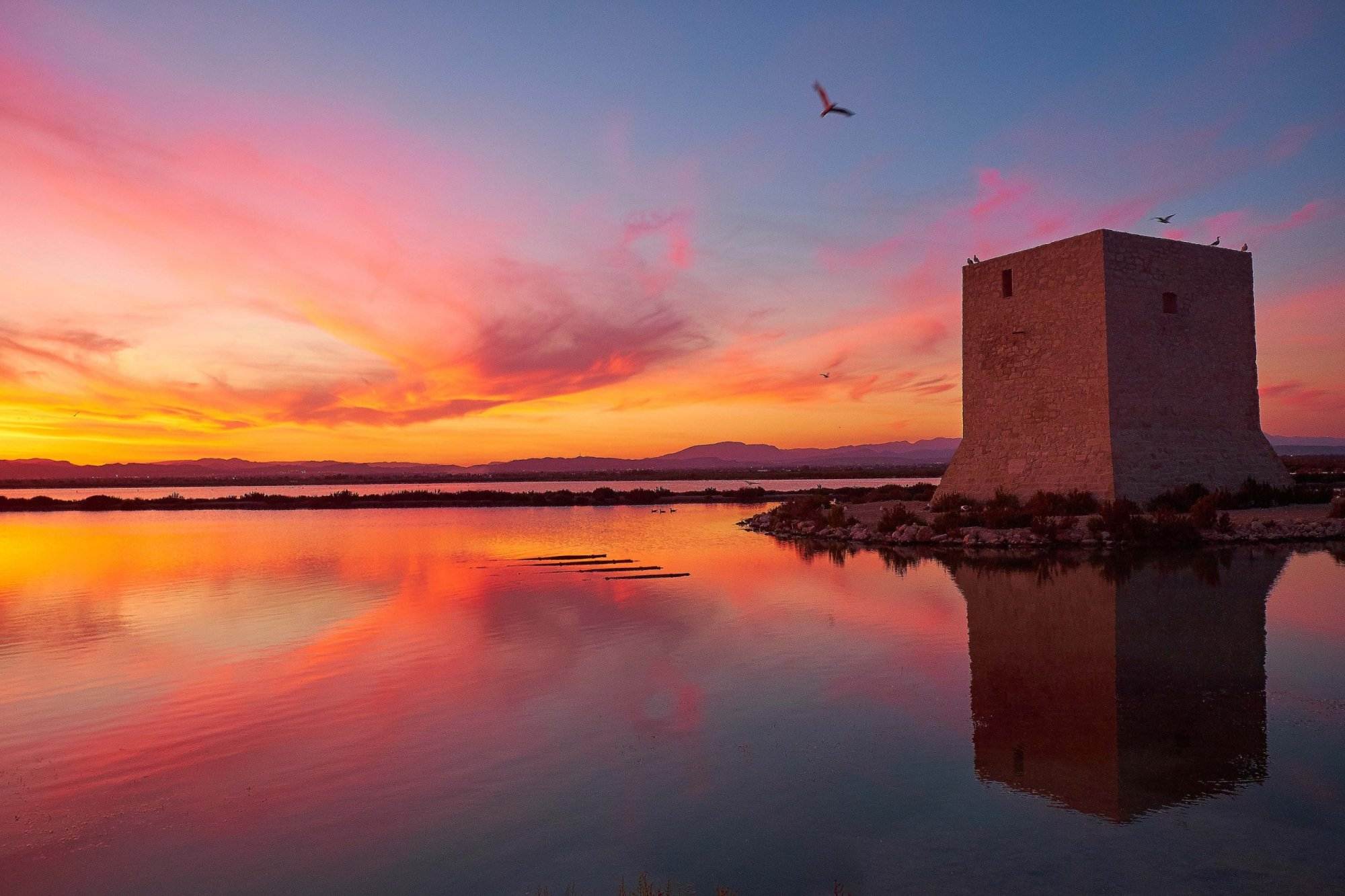The Parque Natural de las Salinas de Santa Pola is an impressive natural enclave located on the southeast coast of Spain, in the province of Alicante. This park, declared a Nature Reserve in 1988, covers an area of approximately 2,500 hectares and is a place of great historical and biological importance. Over the years, it has played a fundamental role in the local economy and has been a refuge for a wide variety of flora and fauna species.
History of the Natural Park of the Salt Flats of Santa Pola. The salt flats of Santa Pola have a long history dating back to Roman times. For centuries, the salt flats have been a place of salt production, a very valuable resource for both food preservation and industry. Salt production techniques have evolved over the years, from traditional methods to the modern facilities used today.
In the 20th century, the Santa Pola salt mines experienced an important economic boom. Salt was exported to different parts of the world and became a source of wealth for the region. However, over time, the salt industry became less important and there was a decline in production. This led to the protection and conservation of the salt flats as an important natural ecosystem.
Biodiversity of Las Salinas Natural Park
The Parque Natural de las Salinas de Santa Pola is home to an incredible biological diversity. Its lagoons, dunes, marshes and salt marshes provide a vital habitat for numerous species of birds, fish, invertebrates and plants. It is considered a site of special importance for the conservation of aquatic and migratory birds.
Among the birds that can be found in the park are the pink flamingo, spoonbill, common tern, kentish plover and Audouin’s gull, among many others. These birds find in the salt flats an ideal place to feed, rest and reproduce.
In addition to birds, the park is home to a great diversity of fish and crustacean species adapted to the saline waters. Among them are the muleto, the fartet and the samarugo, species endemic to the area and considered endangered.
In terms of vegetation, the salt flats are populated by flora adapted to saline conditions, such as halophilic plants, which have the ability to tolerate high levels of salinity. There are also dunes and meadows of Posidonia oceanic, a marine plant that plays a crucial role in the health of the coastal ecosystem.
Ecological importance and conservation of the Park
The Parque Natural de las Salinas de Santa Pola is of great ecological importance, as it acts as a refuge for numerous species of flora and fauna, many of which are in danger of extinction.
In addition to its ecological importance, the Santa Pola Salt Flats Natural Park plays a vital role in the conservation of coastal ecosystems and the protection of natural resources. By preserving these salt flats, the conservation of aquatic and terrestrial habitats is guaranteed, as well as the preservation of biodiversity.
Proper management of the salt flats is crucial to maintain their ecological balance. Actions are carried out to control water quality, control salinity and the level of flooding of the lagoons, and promote the reproduction of the species present. Cleaning and maintenance work is also carried out to ensure the conservation of the facilities and the habitat.
An important educational and recreational value
In addition to its ecological value, the Salinas de Santa Pola Natural Park also has an important educational and recreational value. Guided tours and educational activities are carried out to raise public awareness of the importance of conserving these natural spaces and to encourage respect for biodiversity.
For nature lovers and birdwatchers, the park offers numerous opportunities. There are strategically located viewpoints from which to observe birds in their natural habitat, as well as hiking trails that allow visitors to explore the park and enjoy its scenic beauty.
In short, the Salinas de Santa Pola Natural Park is a natural treasure that combines history, biodiversity and conservation. Its importance both historically and biologically makes it a unique place in the province of Alicante. In addition to its ecological value, the park offers visitors the opportunity to immerse themselves in the beauty of nature and learn about the importance of preserving and protecting these ecosystems.

